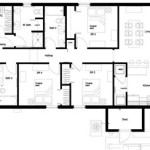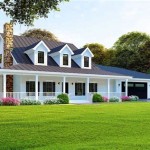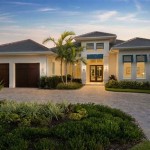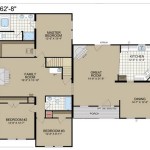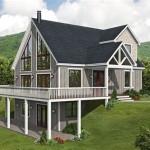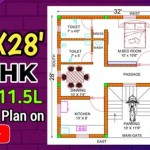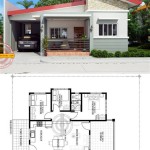Triple Wide Modular Home Floor Plans: Space, Style, and Affordability
Triple wide modular homes represent a significant step up in size and customization compared to single and double wide models. These homes offer the square footage and layout possibilities often associated with traditionally built houses, but with the advantages of modular construction: faster build times, controlled construction environments, and potentially lower costs. The key to unlocking the full potential of a triple wide modular home lies in the floor plan, which dictates the functionality, flow, and overall livability of the space. This article explores the various floor plans available for triple wide modular homes, highlighting common features, customization options, and considerations for prospective buyers.
The term "triple wide" refers to the fact that these homes are constructed from three separate modules that are transported to the building site and joined together on a permanent foundation. This construction method allows for a wider footprint and more complex designs than single or double wide models. The resulting homes can range from approximately 1,800 square feet to over 3,000 square feet, depending on the specific design and manufacturer. This size range opens up a vast array of floor plan possibilities, catering to diverse needs and lifestyles.
Understanding Common Floor Plan Configurations
Triple wide modular homes often feature floor plans that mimic those found in traditional site-built houses, encompassing a variety of bedroom, bathroom, and living area configurations. Common arrangements include three to five bedrooms, two to three bathrooms, and dedicated living, dining, and family room spaces. The separation of bedrooms into distinct wings of the house is also a frequent feature, offering enhanced privacy and noise reduction. Several floor plan configurations are seen commonly.
Ranch Style: Ranch style floor plans prioritize single-level living, making them ideal for individuals seeking accessibility and ease of movement. These layouts often feature an open concept kitchen and living area, with bedrooms situated along one side of the house. Ranch-style triple wide modular homes can be particularly appealing for retirees or families with young children.
Split Floor Plan: This configuration divides the house into separate zones, typically with the master suite located on one side and the remaining bedrooms on the opposite side. The living areas, such as the kitchen, dining room, and living room, are situated in the center of the home. Split floor plans offer enhanced privacy for the master suite and can be advantageous for families with teenagers or guests.
Open Concept: Open concept floor plans emphasize a seamless flow between the kitchen, dining, and living areas. This design promotes social interaction and creates a feeling of spaciousness. Open concept triple wide modular homes are well-suited for entertaining and families who value a connected living environment.
Multi-Generational: Multi-generational floor plans are designed to accommodate multiple families or extended family members living under one roof. These layouts often include a separate suite with a private entrance, bathroom, and kitchenette, allowing for a degree of independence and privacy. This type of floor plan is growing in popularity as families increasingly seek shared living arrangements.
These are just a few examples of the floor plan configurations available for triple wide modular homes. Manufacturers offer a wide range of pre-designed plans, as well as the option to customize layouts to meet specific needs and preferences.
Key Considerations When Choosing a Floor Plan
Selecting the right floor plan for a triple wide modular home requires careful consideration of several factors, including lifestyle, family size, budget, and site constraints. A thorough assessment of these aspects is crucial to ensuring a satisfactory outcome.
Lifestyle: How the home will be used on a daily basis should significantly influence the floor plan selection. Individuals who frequently entertain may prioritize a large, open concept living area, while those who work from home may require a dedicated office space. Families with young children may prefer a layout that keeps the bedrooms close together, while those with older children may value the privacy afforded by a split floor plan. Consider hobbies, interests, and daily routines when evaluating different floor plan options.
Family Size: The number of bedrooms and bathrooms needed to comfortably accommodate the occupants is a fundamental consideration. It is important to anticipate future needs as well, such as the possibility of adding children or accommodating aging parents. Overcrowding can lead to discomfort and stress, while having too much unused space can be wasteful.
Budget: The size and complexity of the floor plan directly impacts the cost of the home. Larger homes with more bedrooms, bathrooms, and custom features will generally be more expensive than smaller, simpler models. It is essential to establish a realistic budget and work with the manufacturer to find a floor plan that meets both needs and financial constraints. Consider also the costs of land preparation, foundation installation, and utility connections, as these can add significantly to the overall expense.
Site Constraints: The size and shape of the building site can limit the range of floor plans that are feasible. For example, a narrow lot may not be suitable for a sprawling ranch-style home. Site access for delivery and setup of the modular sections is also a critical consideration. It is important to consult with the manufacturer and a surveyor to ensure that the chosen floor plan is compatible with the building site.
Beyond these core considerations, other factors such as accessibility needs, energy efficiency goals, and desired aesthetic should also be taken into account. A well-thought-out floor plan will seamlessly integrate these elements to create a comfortable and functional living space.
Customization Options and Features in Triple Wide Modular Homes
One of the significant advantages of modular construction lies in the ability to customize floor plans and features to create a truly personalized home. While manufacturers offer a range of standard plans, they also provide options for modifying layouts, adding upgrades, and selecting finishes to reflect individual tastes and preferences.
Floor Plan Modifications: Most manufacturers are willing to work with buyers to modify existing floor plans to better suit their needs. This can involve adding or removing walls, expanding rooms, relocating bathrooms, or creating custom storage solutions. These alterations can significantly enhance the functionality and flow of the home.
Upgrade Packages: Manufacturers typically offer a variety of upgrade packages that include features such as granite countertops, stainless steel appliances, hardwood flooring, and custom cabinetry. These upgrades can elevate the aesthetic appeal and value of the home.
Exterior Finishes: A wide range of exterior finishes are available for triple wide modular homes, including vinyl siding, wood siding, brick veneers, and stone accents. Homeowners can choose finishes that complement the surrounding environment and reflect their personal style.
Energy Efficiency Features: Many manufacturers offer energy efficiency packages that include features such as Energy Star-rated appliances, high-performance windows, and improved insulation. These features can significantly reduce energy consumption and lower utility bills over the long term. Consider the climate in which the home will be located when selecting energy efficiency options.
Accessibility Features: For individuals with mobility limitations, manufacturers can incorporate accessibility features such as wider doorways, roll-in showers, and grab bars. These modifications can make the home more comfortable and safe for individuals with disabilities.
It is important to discuss customization options and features with the manufacturer early in the planning process. This will allow for a clear understanding of the costs involved and ensure that the desired features can be incorporated into the design. The level of customization available can vary between manufacturers, so it is worthwhile to research different options and compare offerings.
In conclusion, triple wide modular homes present a compelling option for individuals seeking affordable and spacious housing. The diverse range of floor plans available, coupled with the ability to customize layouts and features, allows buyers to create homes that perfectly meet their needs and preferences. By carefully considering lifestyle, family size, budget, and site constraints, prospective homeowners can make informed decisions and unlock the full potential of modular construction.

Triple Wide Floor Plans Mobile Homes On Main

Triple Wide Floor Plans Factory Select Mobile Homes

Triple Wide Floor Plans The Home Az Manufactured Homes Modular

Triple Wide Mobile Homes Factory Expo Home Centers

Isleta 40 X 76 3040 Sqft Mobile Home Factory Expo Center

The Evolution 41764c Manufactured Home From Palm Harbor Homes A Cavco Company

Triple Wide Floor Plans Mobile Home Modular Metal House

The Hacienda Iii 41764a Manufactured Home From Palm Harbor Homes A Cavco Company

Triple Wide Mobile Homes Finding The Right Interior Layout

Triple Wide Floor Plans The Home Az

